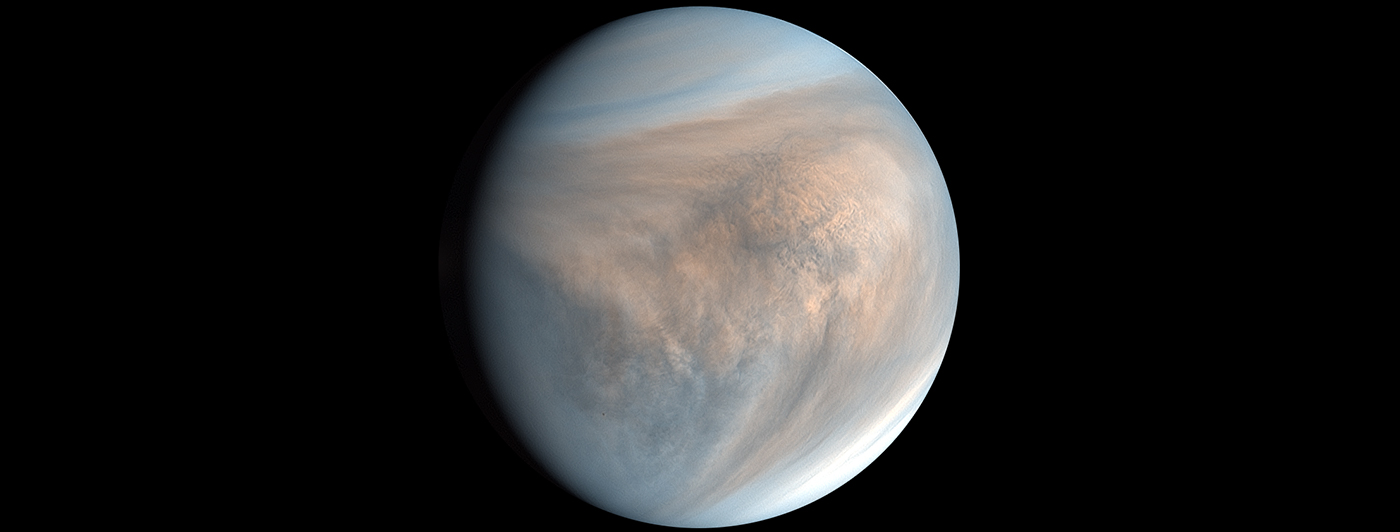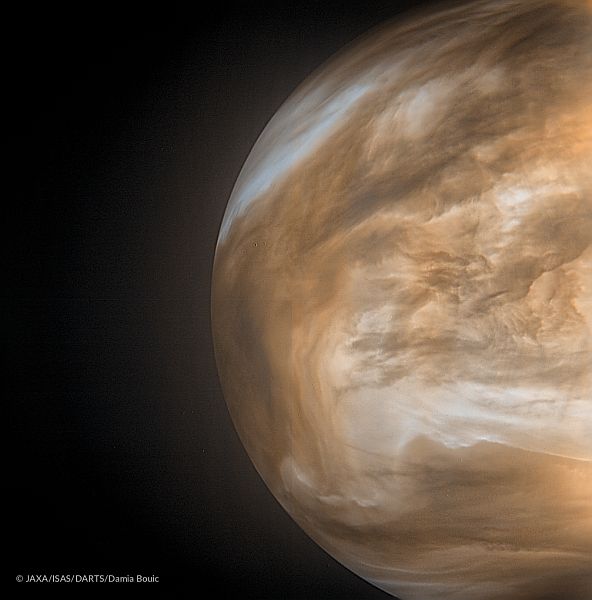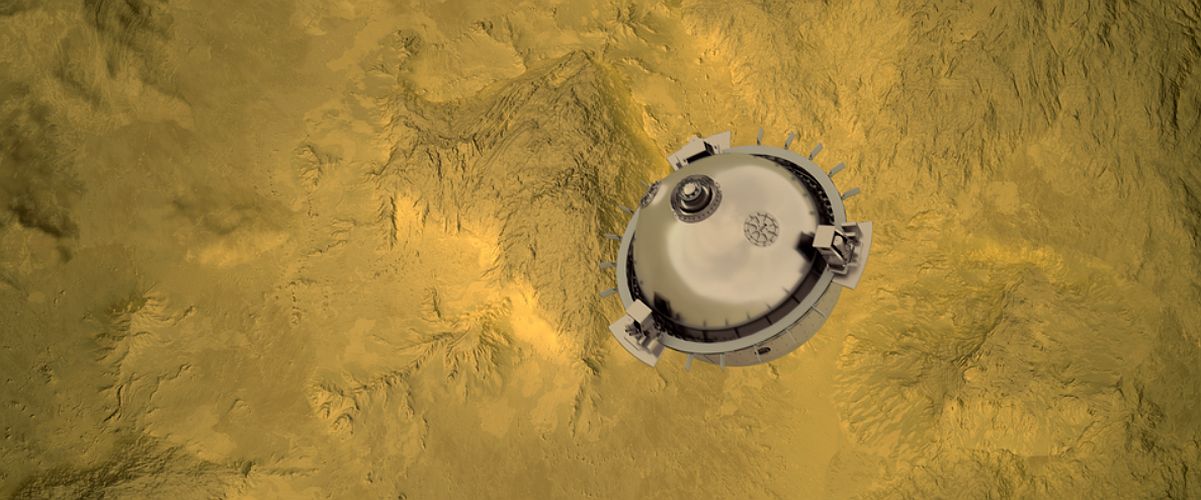
Space scientists have always looked up to our closest planet neighbour and wondered what if there is life on Venus. Sanjay Limaye, from University of Wisconsin-Madison Space Science also an expert on Venus says that in the coming decade in a collective effort, astronomers all across the globe will make case for exploring the “evening star”. With an experience of over 45 years, Limaye’s core investigation is the planet’s dense atmosphere.
Last year’s publication in the Journal Astrobiology suggested that Venus could be a potential home for microbial life. The conclusion is based on the 2019 Venera-D Venus Cloud Habitability workshop which was attended over 50 scientists in Moscow. The workshop aimed to examine the current research and to gain an understanding of planet’s possibility to support life.
The evening star
In the network of solar system, Venus occupies position between Mercury and Earth. The distance between Earth and Venus is 39.761 million km while between Earth and Mars is 345.73 million km. The evening star was formed at the same time as Earth, that is, 4.5 billion years ago and it takes 243 days to complete one rotation.
The atmosphere is saturated with carbon dioxide with sizzling temperatures, strong winds and volcanic activity. With these inhospitable conditions, the planet’s thick clouds make the region congenial for microbial life.
Another reason for the likelihood of scanty habitable zones is the availability of sunlight, nutrients and some water.

Early formation and water
If we go back to the early formation of Venus, astrophysicists believe that the planet was not a pressure cooker as it looks today. In fact, the environment was similar to Earth, that is, it was rich with thermal vents and liquid water oceans. This insinuates that for about 3 billion years these volcanic activity and oceans might have supported microorganisms. At least, mathematical modelling indicates that water could have existed for 1 billion to 3 billion years, says Limaye.
During the same time, the sun must be intense and so might have radiated high energy particles and ultraviolet rays. After formation, Venus began to heat up and eventually by the end of millions of years, its oceans evaporated. Trapped carbon dioxide and water vapor, gave way to greenhouse effect, thus leading to dense and hot atmosphere on planet’s surface, that we witness today.
The planet has surface temperature more than 486 degrees Celsius and has a pressure 92 times higher than Earth’s sea-level pressure. Although these conditions are inhospitable to most life on Earth but for extremophiles (micro-organism that is able to live in extreme environments) it could be just another challenge.
Scientists doubt when it comes to fossil remains on planet due to continuous flux of volcanic activity. Nevertheless, satellites orbiting Venus suggest evidences of potential life gliding throughout narrow pockets aloft in the Venusian sky.
Missions to Venus
The Pioneer Venus Orbiter and Multiprobe missions in 1978 gave the first glimpse of Venus’ atmospheric layers. While the Venera 13 and 14 missions of the 1980s sent back the colorful panoramic visuals of the surface. From here we get to know about the surface and clouds of the planet.
After 4 years, VeGa 1 and VeGa 2 recorded more information about the atmosphere, clouds, winds and the planet’s surface composition.
To understand the chemical signature of the planet, researchers collected spectral data.
Spectral data is measurement of particular wavelengths of radiation related to the phenomenon being observed. It is through this data, researchers were able to conclude the presence of carbon dioxide, sulfur dioxide and even trace amounts of water vapor.

The data also revealed mysterious dark patches in its cloud layers. Limaye and colleagues suggested that it could be the result of microorganisms quite similar to algal patches in Earth’s oceans or lakes.
The planet has potential to support conditions for iron- and sulfur -centered metabolism says Limaye. Therefore, particles in planet’s lower clouds contain enough mass balance to support microorganisms along with water and solutes.
Reason for the migration of microorganism on the planet could be its harsh atmospheric conditions. Patches that have been confirmed via optical methods could be the calmer and less extreme conditions in Venus’ atmosphere, and congenial for the microorganisms.
Harvesting light
A planet’s atmosphere is not only responsible for filtering harmful radiation and solar flares but also for harvesting life. Earth’s atmosphere and magnetic fields obstructs most of sun’s dangerous rays. Flora and fauna flourish on weaker forms of UV light that we receive after the filtration by the atmosphere.
Limaye and colleagues believe that Venusian atmosphere could also support phototrophy. The thick atmosphere allows for filtration of ultraviolet rays in the middle and lower clouds therefore reinforcing possibility of microbial life forms.
Although we cannot expect Earth like atmosphere on our neighbouring planets but the possibility of the existence of extremophiles cannot be ruled out.

Future missions
Till date, there have been 50 missions dispatched – since 1960s – to study the “evening star”. And the next decade will herald seven additional probes, some of them are as follows:
- 2023 will witness a small probe by Rocket Labs, the space company founded by Kiwi Peter Beck. The mission will aim for the presence of phosphine on Venus.
- 2026 will see the India Space Research Organization Venus orbiter to carry radars
- In 2027 NASA’s VERITAS orbiter will carry the another radar for more in-depth information
- In 2028 NASA’s DAVINCI mission will launch a dual-purpose spacecraft. One, it will gather atmospheric measurements and two, it will collect data during decent while gliding through the various atmospheric layers.
- 2029 will see ROSCOSMOS’s Venera-D mission. The mission will consist of deployment of an orbiter and a lander to endure Venus’s harsh conditions and gather atmospheric and ground measurements and relay communication back.
- In the early 2030s, EnVision ESA’s next Venus orbiter, in collaboration with NASA, will be launched, with an aim to provide a holistic view of the planet.
Takeaway
Once we are able to deplete atmospheric CO2 via terraforming attempt, theoretical as it seems, it would open up doors for interplanetary settlements. We are actually reading about efforts our scientists are making to have a base station at Moon and Mars now on Venus, just wow!



